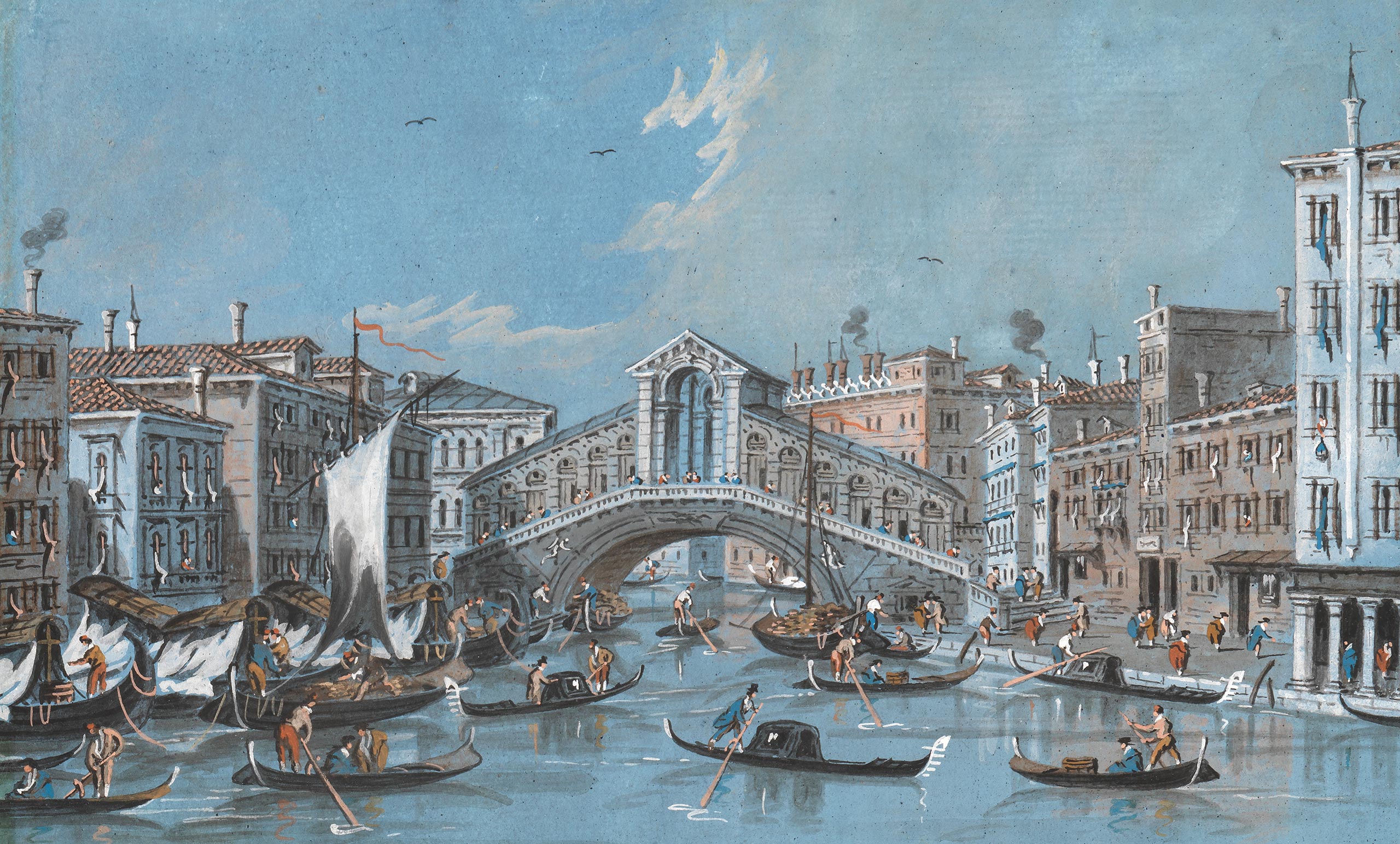Guardi
Giacomo
Venice 1764 — 1835
A View of piazza di San Marco
Tempera.
Inscribed and signed on the verso Veduta della piazza di S. Marco Reccapito all’Ospedaletto in calle del Peruchier al N° 5245 dimandar / Giacomo de Guardi.
240 x 150 mm (9 7/16 x 5 15/16 in.)
A View of Ponte Rialto
Tempera.
Inscribed and signed on the verso Reccapito all’Ospedaletto in calle del Peruchier al N° 5245 dimandar/ Giacomo de Guardi.
240 x 150 mm (9 7/16 x 5 15/16 in.)
The son of the famous Francesco Guardi (1712 – 1793), Giacomo was, like his father, a painter of urban landscapes, generally called vedute, in oil, gouache or tempera. He worked in collaboration with his father for at least ten years, between 1780 and Francesco’s death, at a time when Francesco’s career was enjoying particular recognition in his home town: in 1782, he was commissioned to prepare paintings for the reception of Pope Pius VI and, in the same year, executed a series of vedute for the “Comtes du Nord”, alias the Tsarevich Pavel Petrovich, son of Catherine II the Great, Empress of Russia, and his wife Zarevna Maria Feodorovna; in 1784, Francesco was accepted into the Venice Academy of Painting, which had long refused him because of his dedication to vedute painting, a genre regarded as minor. Drawings of theatre sets dated 1787 and preserved in the Correr Museum show the collaboration between father and son. We know that Giacomo continued his father’s art after his father’s death, i.e. continued to produce and sell views painted using the techniques he had learned from Francesco and it is not always easy to distinguish between Francesco’s late paintings and those by Giacomo: father and son have deliberately blurred the lines by signing their works with either of their names.
When it comes to the tempera works, on the other hand, Giacomo’s style is unmistakable, particularly that of the vedutine or cartoline, small, schematic and colourful views like the ones we are showing here, intended for street tourists as souvenirs to take home and stick in travel albums. Most of them bear inscriptions on the back that are similar to those on ours: the artist is trying to promote his work and tell tourists where to find him. For example, the same inscription can be found on the back of a gouache depicting the Piazza di san Marco with a slightly different framing,1 and a similar inscription on the back of a gouache depicting the Rialto Bridge.2 Giacomo Guardi painted many different views of the whole city, but these representations of two emblematic sites of Venice are among the most represented in his work, and were certainly the most sought-after by visitors.
The end of his life was difficult; lacking his father’s talent, it was complicated for him to renew a stock of paintings that were sufficiently attractive to ensure him an adequate income. The Correr Museum holds around a hundred of his works on paper, most of which are signed. Although sometimes scorned for being a little systematic, Giacomo’s cartoline, as well as providing charming depictions of the Serenissima, are deeply evocative of the beginnings of tourism and cultural travel. Their artificial, slightly ghostly light is what gives them their charm and has undoubtedly contributed to the city’s reputation for melancholy.
- Christie’s London, 25 June 1974, lot 200.
- Christie’s London, 15 December 1992, lot 141: « veduta del’ ponte di Rialto / all’ospedaletto in SS Giov e Paolo N° 5245 dimandar / Giacomo de Guardi ».


